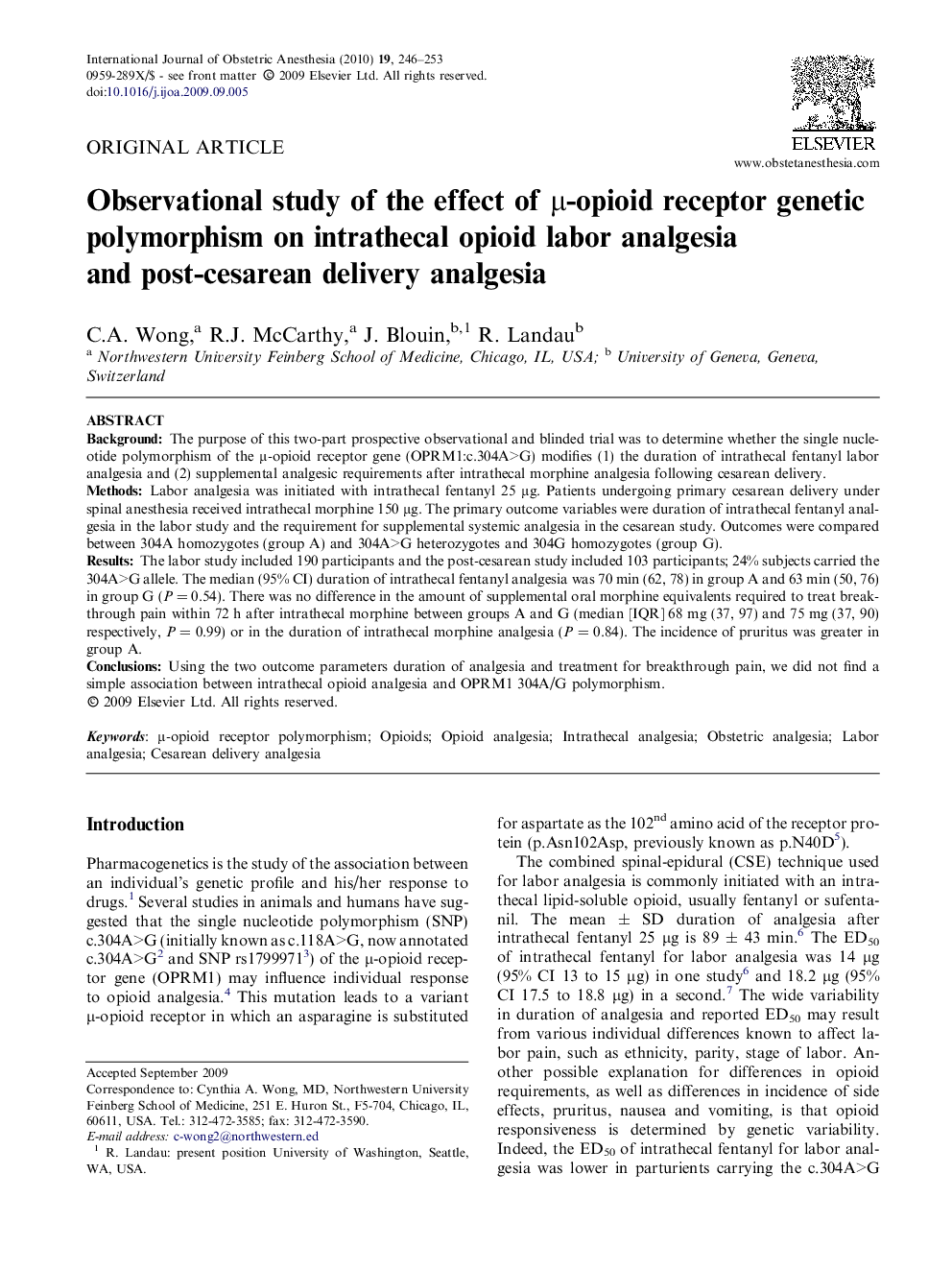| Article ID | Journal | Published Year | Pages | File Type |
|---|---|---|---|---|
| 2758155 | International Journal of Obstetric Anesthesia | 2010 | 8 Pages |
BackgroundThe purpose of this two-part prospective observational and blinded trial was to determine whether the single nucleotide polymorphism of the μ-opioid receptor gene (OPRM1:c.304A>G) modifies (1) the duration of intrathecal fentanyl labor analgesia and (2) supplemental analgesic requirements after intrathecal morphine analgesia following cesarean delivery.MethodsLabor analgesia was initiated with intrathecal fentanyl 25 μg. Patients undergoing primary cesarean delivery under spinal anesthesia received intrathecal morphine 150 μg. The primary outcome variables were duration of intrathecal fentanyl analgesia in the labor study and the requirement for supplemental systemic analgesia in the cesarean study. Outcomes were compared between 304A homozygotes (group A) and 304A>G heterozygotes and 304G homozygotes (group G).ResultsThe labor study included 190 participants and the post-cesarean study included 103 participants; 24% subjects carried the 304A>G allele. The median (95% CI) duration of intrathecal fentanyl analgesia was 70 min (62, 78) in group A and 63 min (50, 76) in group G (P = 0.54). There was no difference in the amount of supplemental oral morphine equivalents required to treat breakthrough pain within 72 h after intrathecal morphine between groups A and G (median [IQR] 68 mg (37, 97) and 75 mg (37, 90) respectively, P = 0.99) or in the duration of intrathecal morphine analgesia (P = 0.84). The incidence of pruritus was greater in group A.ConclusionsUsing the two outcome parameters duration of analgesia and treatment for breakthrough pain, we did not find a simple association between intrathecal opioid analgesia and OPRM1 304A/G polymorphism.
